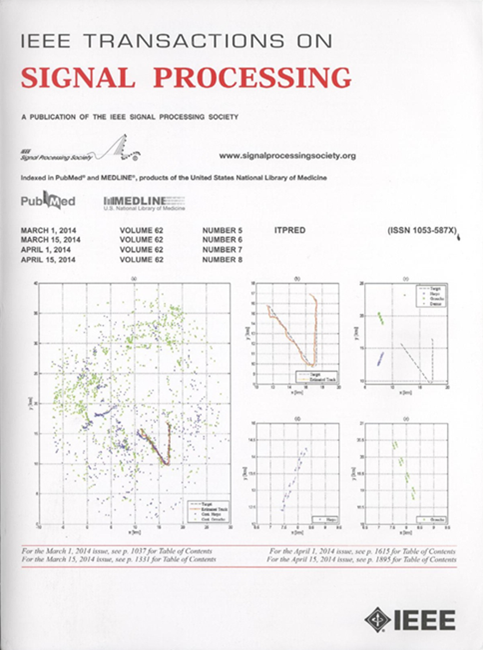基于方位引导统计生成对抗网络的合成孔径雷达图像定向生成算法
IF 4.6
2区 工程技术
Q1 ENGINEERING, ELECTRICAL & ELECTRONIC
引用次数: 0
摘要
合成孔径雷达(SAR)图像的高获取成本导致数据不足,这限制了基于深度学习的自动目标识别(ATR)模型的性能。为了解决这一问题,本文提出了一种基于方位引导统计生成对抗网络(AGSGAN)的SAR图像方向生成算法。该算法不仅可以生成与真实SAR图像具有相似统计特征的图像,而且可以控制生成图像的方位角。考虑到SAR图像在不同方位角处的统计特征不同,本文提出的算法将SAR图像的方位角区间划分为多个自适应方位角区间,每个自适应方位角区间内的图像统计特征应相似。然后,利用$G^{0}$分布拟合各自适应方位角区间内图像的统计分布,得到真实图像的统计特征;最后,从拟合的$G^{0}$分布中采样的随机噪声和自适应方位区间的序号被输入到AGSGAN中。AGSGAN生成在指定的自适应方位角区间内且具有与真实图像相似的统计特征的图像。实验结果表明,该算法生成的图像在统计特征上更加真实,能够有效提高基于深度学习的SAR自动目标识别模型的识别精度。本文章由计算机程序翻译,如有差异,请以英文原文为准。
A Directional Generation Algorithm for SAR Image Based on Azimuth-Guided Statistical Generative Adversarial Network
The high cost of acquiring synthetic aperture radar (SAR) images results in the problem of insufficient data, which limits the performance of deep learning-based automatic target recognition (ATR) models. To solve this problem, a directional generation algorithm for SAR image based on azimuth-guided statistical generative adversarial network (AGSGAN) is proposed in this paper. The proposed algorithm can not only generate images with similar statistical characteristics as the real SAR images, but also control the azimuth of the generated images. Considering that the statistical characteristics of SAR images are different at different azimuth, the proposed algorithm partitions the azimuth intervals of SAR image into adaptive azimuth intervals, and the statistical characteristics of images within each adaptive azimuth interval should be similar. Then, the proposed algorithm obtains the statistical characteristics of real images by using the
$G^{0}$ $G^{0}$
求助全文
通过发布文献求助,成功后即可免费获取论文全文。
去求助
来源期刊

IEEE Transactions on Signal Processing
工程技术-工程:电子与电气
CiteScore
11.20
自引率
9.30%
发文量
310
审稿时长
3.0 months
期刊介绍:
The IEEE Transactions on Signal Processing covers novel theory, algorithms, performance analyses and applications of techniques for the processing, understanding, learning, retrieval, mining, and extraction of information from signals. The term “signal” includes, among others, audio, video, speech, image, communication, geophysical, sonar, radar, medical and musical signals. Examples of topics of interest include, but are not limited to, information processing and the theory and application of filtering, coding, transmitting, estimating, detecting, analyzing, recognizing, synthesizing, recording, and reproducing signals.
 求助内容:
求助内容: 应助结果提醒方式:
应助结果提醒方式:


